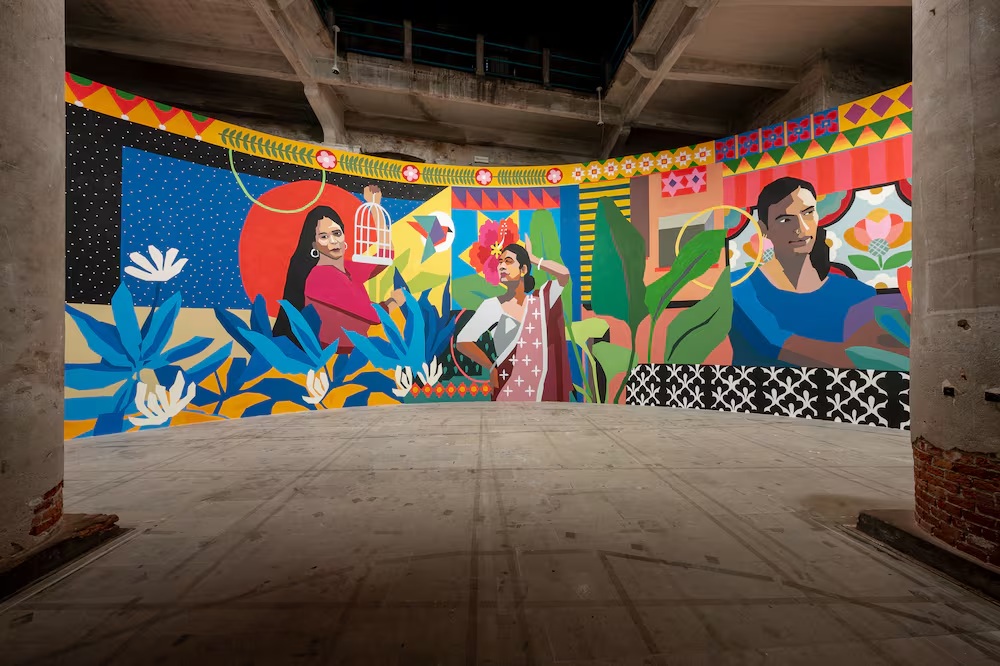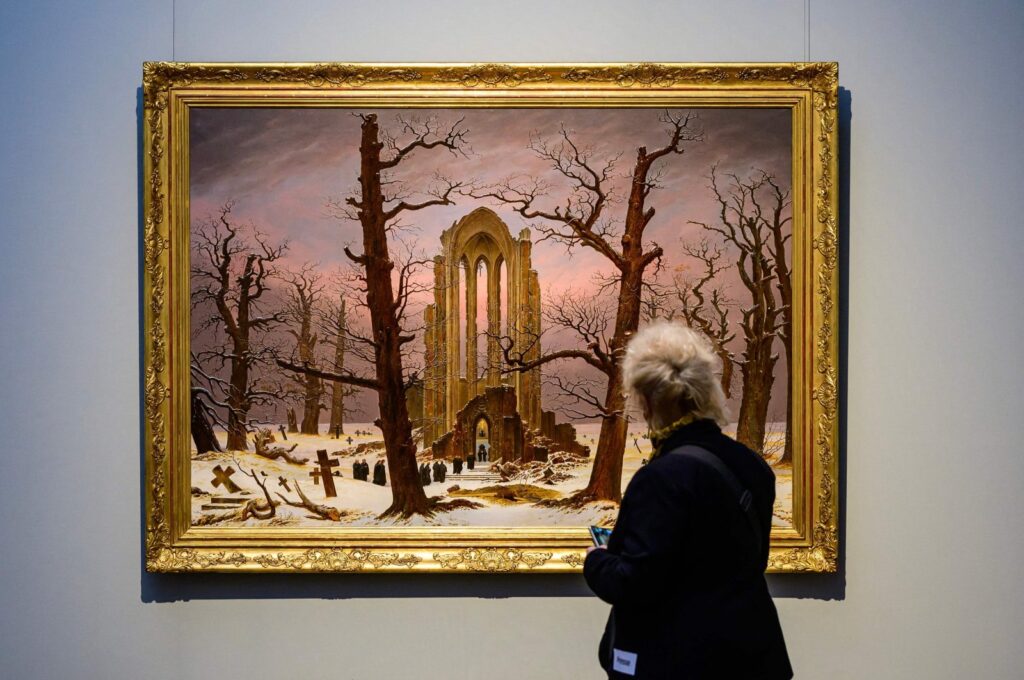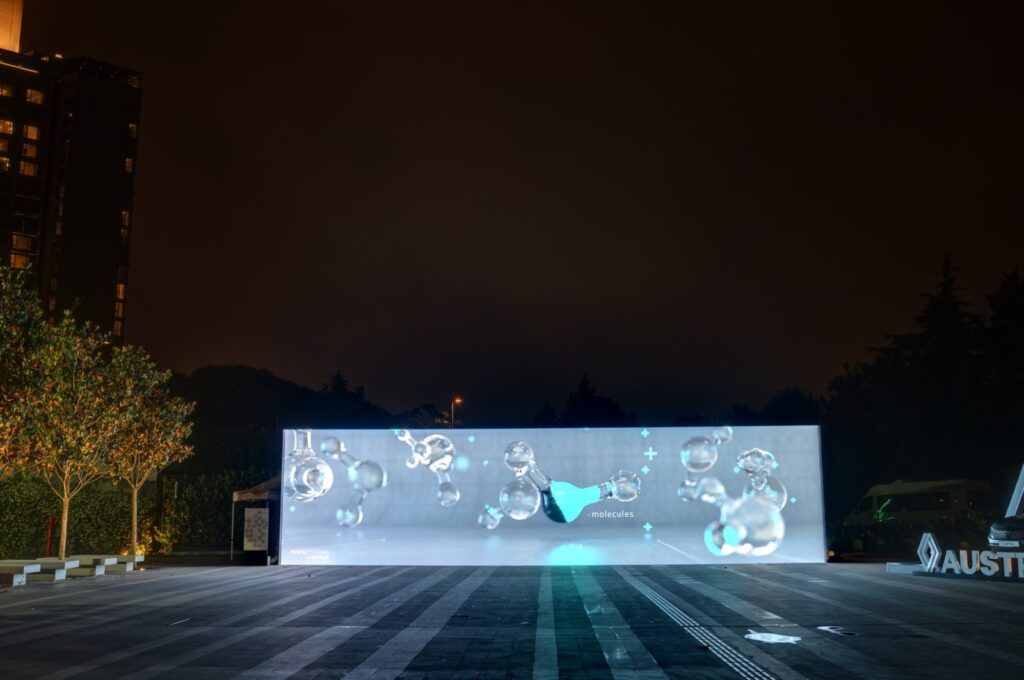
Razmig Bedirian
Sand, saltwater, time and rust are among Mohamed Al Astad’s favourite tools as an artist.
The Emirati artist takes regular excursions to the beaches of the country, particularly of his home town of Khor Fakkan, to bury large canvases along with pieces of iron along the shoreline.
He then leaves them there for a week, returning to find that the oxidisation process has left the orange-brown prints on the canvas. He then washes the canvas in the sea to remove any excess rust, waste and sand, before taking it home and washing it again, this time with fresh water, to rid the canvas of any salt remnants that may cause the fibres to deteriorate.
:quality(70)/cloudfront-eu-central-1.images.arcpublishing.com/thenational/S7IM6D5KBJHGJECR26DYI65Z2U.jpg?w=810&ssl=1)
It is a technique Al Astad has spent the last 24 years developing, an artistic collaboration, he says, with the sea that has captivated him since he was a boy, collecting seashells and chasing seagulls on the shore.
“It is a conversation with the beach,” he says. “I’m talking with the sand, to that heat, to that pressure. It’s as if nature is asking me to make art with it. It doesn’t know how to draw a horse, so I make the silhouette of a horse in iron, bury it in sand, and it gives me its own variation of it. It draws a horse in its own way.”
The fine-tuning of Al Astad’s technique is axiomatic in the works on display in his solo exhibition Another Perspective, which is showing at the Cultural Foundation until September 20.
In fact, the welcoming work that viewers will first see when they walk into the space is likely Al Astad’s dearest of the bunch.
Instead of canvas, the work bears oxidised patterns on silk, six metres long and a little over a metre in width. The rust bleeds on the material in a way that is reminiscent of watercolours. Draped at an angle towards the floor, the work is set between two screens showing videos of waves rolling towards the beach. Fans are positioned behind the work, which produce an undulating wave-like motion along the length of the silk.
:quality(70)/cloudfront-eu-central-1.images.arcpublishing.com/thenational/5CJDIII2UBBS3PRFC7LDXA7P6Q.jpg?w=810&ssl=1)
Al Astad calls the technique danat al shawati or the art of beach pearls. The idea, he says, first came to him when he returned from his studies at the American University in Washington DC in 1998. He says he was looking for something to set him and his work apart.
“I felt I had to find myself in the universe,” he says. “I didn’t want to emulate.”
He was at first inspired by a tarp that covered a boat that had been ashore for years. It was discoloured by grime and the droppings of seagulls.
“I cut it from the middle and made four paintings out of it,” he says. “I didn’t touch it, merely signed it and framed it. I booked a small area at the Abu Dhabi National Exhibition Centre and displayed the works. I was curious how people would see them.”
The works brought an overwhelmingly positive reaction, Al Astad says. He adds that he was stunned, having approached the experiment with a degree of cynicism. He then thought of how he could contribute to the haphazard designs that nature and time left behind on the beach.
A rusted nail, he says, gave him the answer.
“Just seeing the orange-brown build up and the varying shades inspired me,” he says.
He first tried burying saffron and pomegranates with the iron as well, hoping that their intense hues would be transferred onto the canvas. But when he returned to exhume the work a week later, there were no traces of either. Only the iron, and the traces of its oxidisation remained.
“I could make out patterns, faces and figures emerging from the work,” he says.
He began fiercely experimenting with the technique, burying works in holes of different depths, leaving them across varying durations and adding different hues to the canvas. He has lost many works to the tide, he says. Some canvases were torn and washed away by the waves and then there are those that could very well still be forgotten in the sands along the country’s coasts. He has also created clothes using the method, including T-shirts and even ghutras.
:quality(70)/cloudfront-eu-central-1.images.arcpublishing.com/thenational/NKYH2VP2MVELZLED66B4W3YDBQ.png?w=810&ssl=1)
The process, he says, of digging a hole and burying the canvas or silk, washing the material in the sea and seeing the patterns left to him over time is like therapy.
“It’s meditative,” he says. “You never know what’s going to happen. Open waters leave a different result than closed ones, such as khors since they’re shallow. In places where there are no waves, you don’t need to dig deep, even 10 centimetres would do. In beaches along open waters, I dig more than a metre down. If not, the waves will take the artwork away.”
Al Astad regularly holds workshops to teach his technique to others. He says he is always pleasantly surprised by how people apply his technique.
“I’ve given several workshops on danat al shawati,” he says. “Among the most memorable was the one I held at Zayed University with 20 female art students. We even held the exhibition at the beach.”
Al Astad has taken part in more than 300 group exhibitions in the UAE, Italy, Belgium, Britain and Germany. He has also held 40 solo exhibitions around the world.
The exhibition at the Cultural Foundation, however, marks a new chapter in his career, he says. While many may know the artist for his depictions of Emirati cultural motifs and traditional architecture — the exhibition has plenty of these as well — he says he hopes Another Perspective offers a different, more holistic vantage point of his work.
Courtesy: thenationalnews
The post Mohamed Al Astad on why he buried canvases and iron pieces at the beach for art appeared first on The Frontier Post.








